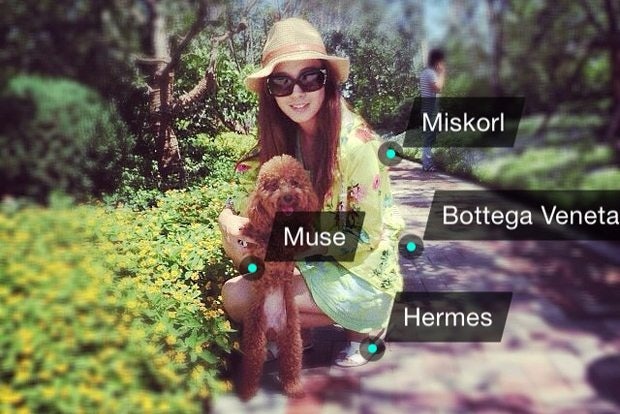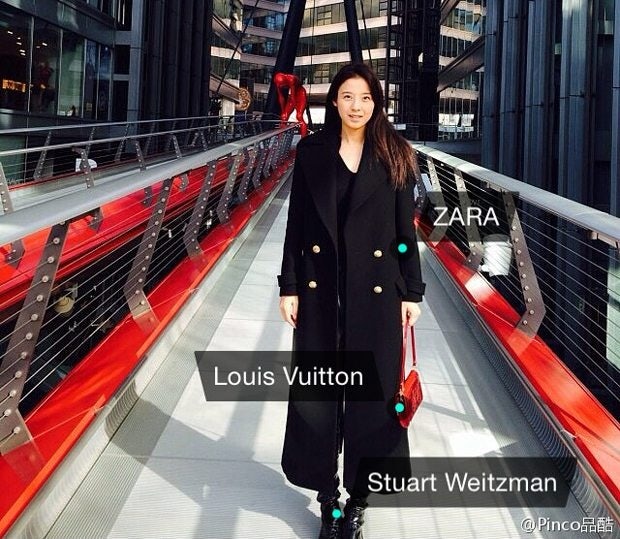
China's new brand-tagging apps just made fashion consumption a lot more conspicuous. (Pinco)
China’s younger demographic loves its “selfies”—self-portraits taken on mobile phones—and a host of Chinese apps exist to “elevate” the selfie experience. There are already apps that focus on facial alteration by enlarging eyes, whitening skin, or even changing the shape of one’s chin. Now, with the entry of two new mobile “selfie” apps in China, users can show off not only their faces, but also the brands they’re wearing.
According to Tech in Asia, two new China apps called Pinco and Nice bring conspicuous consumption front and center with “brand-tagging” capabilities. With both apps, China’s smart phone users can now tag their self-portraits with brand names, and show them off to friends and each app’s community. While brand-tagging on photo-sharing social media has been slow to catch on and is still a relatively new feature in the West, it appears to be roaring ahead in China.
Nice and Pinco were released in March and April respectively this year. While download statistics are not available, Pinco’s official Weibo page has 27,500 fans, while Nice has 1.483 million. Both apps are developed in China, but Pinco is China-specific and only allows sharing on Chinese microblogging site Weibo and mobile messaging app WeChat. Nice, on the other hand, takes a more international approach and allows sharing on Facebook and Instagram.
When users snap their selfie on either of the apps, they can first add filters to it before uploading. They’re then able to tag brands on any of the goods in the photo, which can be anything from a Gucci handbag to a Starbucks latte. Users can then discover similar products by tapping on them, which brings them to a brand page—albeit not one officially owned by the company. There, they can see what products others are wearing and how they’re wearing them.
Brand-tagging on these apps has great potential for brands to advertise their products and create user engagement. According to Business Insider, Nike has been using Instagram’s new brand-tagging functions by tagging athletes on its official account. Others, like Chinese fashion editorial site Bomoda, have created a Pinterest-like app with brand-tagging capabilities, capitalizing on influential key opinion leaders (KOLs) to spread awareness of products.

Many users are mixing luxury brands such as Louis Vuitton with fast fashion such as Zara. (Pinco)
Tech in Asia mentions that for the moment, these apps are currently free of advertisements, but it will probably not be long before brands discover the promotional potential these apps have. The apps have a huge opportunity to monetize by allowing brands to create official corporate accounts. On Pinco, users tend to mix luxury and mid-market brands, with mid-range appearing more frequently. For example, Gucci has been tagged so far by 282 people, while Zara has 780 mentions, making the app an example of Chinese consumers' growing focus on individualism and self-expression through their outfits.